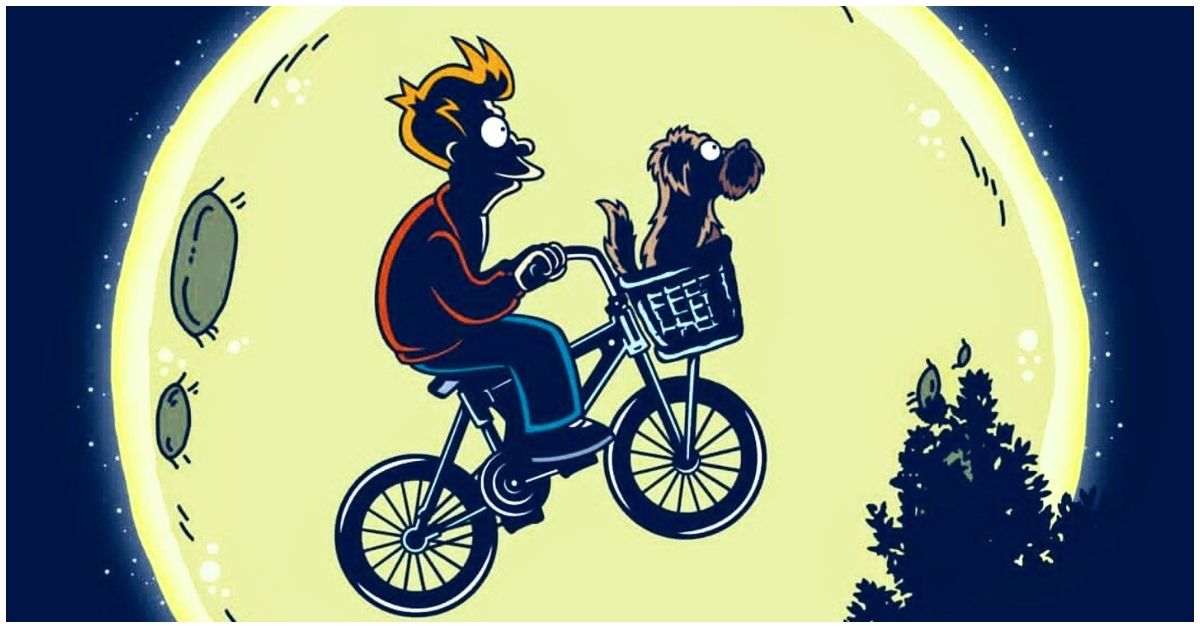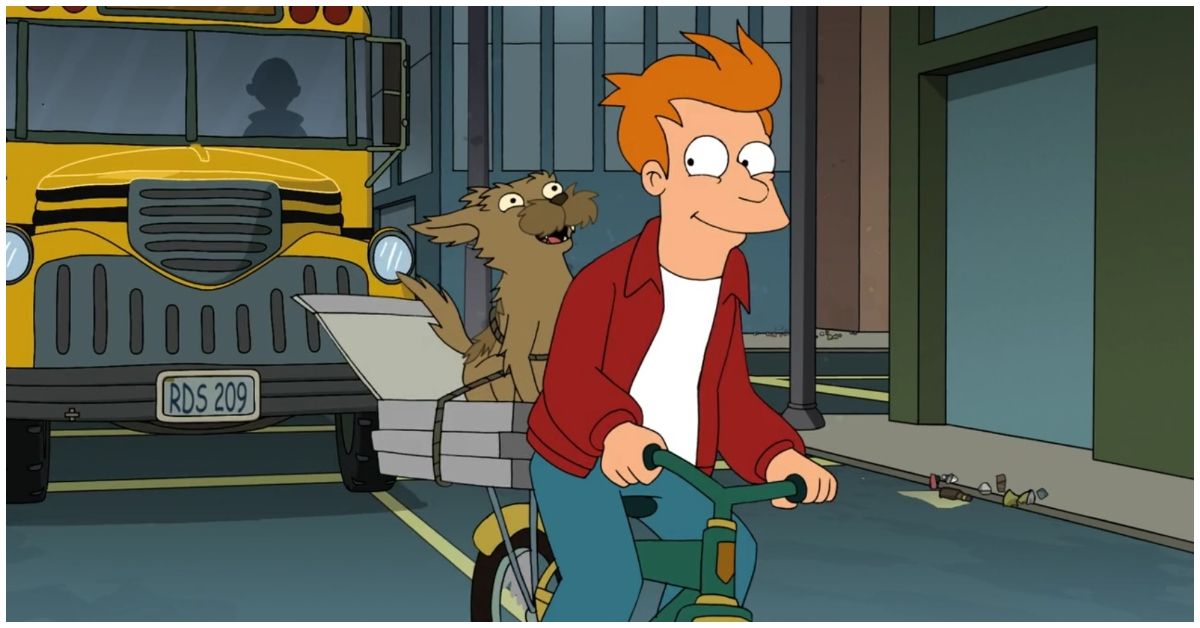Everyone knows and loves The Simpsons. That show's legacy speaks for itself. Perhaps no other series has been as influential on pop culture (and even real-life events) as The Simpsons have. But to many fans of adult satirical cartoons, Matt Groening's other series, Futurama, is equally important. Although, it's safe to say that the show is more of a cult-hit despite season sevens and 140 episodes aired.
Fans adore Futurama because it was filled with heartwarming episodes as well as absolutely heartbreaking ones such as "Jurassic Bark", a story about Fry and his dog, Seymour. The Emmy-nominated episode, as explained by MEL Magazine, explored Fry's connection with a dog he had 1,000 years earlier. Of course, Fry was frozen and woken up in the future, so his first interaction with his dog in the episode was with his fossilized remains. However, we venture back in time to see that Fry's dog waited patiently for his owner to return until he passed away... Just heartbreaking, especially for animal lovers. However, Matt Groening and his team of talented writers originally didn't mean to include a dog in the episode at all... Here's the truth about the episode...
It Was Supposed To Feature Fry's Mother, Not His Dog
Fans of Futurama are always interested in the behind-the-scenes facts of the making of each episode. But they might be surprised to know that writer Eric Kaplan, the man who pitched and wrote the episode, didn't intend to have a dog in it at all. How could that be? The whole story centered around the 1000-year connection between a man and his best friend.
"Originally, Fry went to a museum and discovered his fossilized mother, and since cloning is possible in the future, the story was about this question of, 'Does he want to rekindle this emotional relationship that he thought was over and done with?'" Eric Kaplan, who wrote and produced Futurama from 1999-2009 said to MEL Magazine. "Whenever you write a story, you try to give the main character a really powerful choice between two things, both of which look really good — that puts a lot of heat on them. Then, when they make the decision, you learn more about who they are. That’s the structure of a good story in nine cases out of 10."
So, ultimately, the story became about whether or not Fry wanted to rekindle a relationship with a cloned-version of his loved one in the future, despite it being 1000 years later and he had new relationships.
"I hadn’t thought of this before, but it’s a little bit like the dilemma that the woman in Casablanca has," Eric continued. "She has this relationship with Humphrey Bogart and then her husband, who she believed was dead, appears again, and he’s a hero for the resistance. So it gives her a very difficult choice. I wanted to give Fry a similarly difficult choice, but [executive producer] David Cohen thought it was a little gruesome that we were dealing with the fossilized body of his mother. So I said, 'Well, what if it were his dog?' and David said, 'Okay, let’s do that.' So that was the genesis of the story, which ended up being really effective for Fry as a character."
Writing The Episode
After Eric successfully pitched the episode, he went home and did a pre-outline on it. Afterward, as all writers did on Futurama, he took it back to the writer's room to work on it together. After that, he returned to write a larger outline of it and then handed it directly to David Cohen.
"[I'd then] get some notes, then I’d go home and write a script. Then we’d all rewrite the script as a group," Eric explained of the process. "These things are very, very collaborative projects. With Seymour’s design, for example, while I had input on it, I didn’t quarterback that. I’m pretty sure it was Matt Groening who led the way on the design of Seymour as kind of a low-intensity, low-information kind of dog. As for the writing, I’m sure that much of it came from the other writers. I just don’t remember who added what, because it all went into the same stew, though I imagine my original outline was a little over-complicated and David helped to simplify things, which is generally what happened. Ultimately though, the episode was always going to be about the choice that Fry makes, so all of the writing had to service that. The episode was always going to take place in two timelines — in the past and in the future — and the story in both of those timelines ended up being fairly simple. It’s almost a bit of a bottle show because it’s mostly people in rooms talking."
Another element that really made this episode stand-out was how Fry's dilemma affected his best-friend in the future, Bender the robot. Fry deciding whether or not to bring Seymour back to life give the alcoholic, pessimistic misanthrope of a robot a massive identity crisis. This future developed the character and gave him some real depth. So, in effect, the story choice didn't just make Fry infinitely more likable and relatable, but it also did the same for a supporting character. This is what made Futurama so great. Every story choice affected all of the characters. And in the case of "Jurassic Bark", this story choice was both heartbreaking and heartwarming simultaneously.


